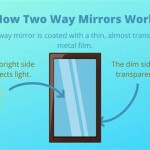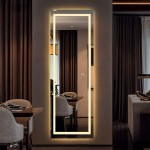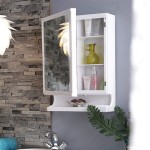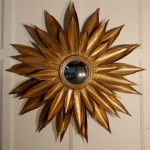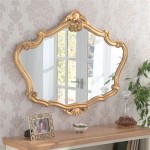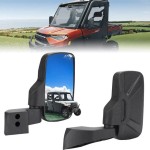How To Paint Wing Mirrors: A Comprehensive Guide
Wing mirrors, or side mirrors as they are often called, are essential components of any vehicle, providing drivers with crucial visibility of their surroundings. Over time, these mirrors can become scratched, faded, or damaged, detracting from the overall appearance of the car. Repainting wing mirrors is a cost-effective alternative to replacement, allowing individuals to restore the aesthetic appeal of their vehicle and potentially increase its resale value. This article provides a detailed, step-by-step guide on how to properly paint wing mirrors, ensuring a professional and durable finish.
The process involves careful preparation, proper painting techniques, and appropriate materials. Neglecting any of these aspects can lead to unsatisfactory results, such as uneven paint application, peeling, or color mismatch. By following the instructions outlined below, individuals can achieve a high-quality finish that revitalizes the appearance of their vehicle's wing mirrors.
Preparation is Key: Removing and Prepping the Wing Mirrors
The success of any paint job hinges on meticulous preparation. This initial stage involves removing the wing mirrors from the vehicle and thoroughly preparing their surface. This step is critical for ensuring proper adhesion of the primer and paint. Attempting to paint the mirrors while still attached to the vehicle can lead to overspray and an unprofessional finish.
1. Removal of the Wing Mirrors: The first step is to carefully detach the wing mirrors from the vehicle. The process for removing wing mirrors can vary depending on the make and model of the car. Typically, this involves removing a few screws or bolts located inside the door panel or on the underside of the mirror housing. Refer to the vehicle's repair manual or online resources for specific instructions tailored to the vehicle in question. Take photographs of the removal process to aid in reassembly. Disconnecting any electrical connections for integrated turn signals or heated mirrors will also be necessary. Ensure the ignition is turned off before disconnecting any electrical components.
2. Cleaning and Degreasing: Once the wing mirrors are removed, they need to be thoroughly cleaned to remove any dirt, grease, wax, or other contaminants. Use a mild detergent and water solution to wash the entire surface of the mirror housing. Rinse thoroughly with clean water and allow the mirror to dry completely. After washing, use a wax and grease remover to further degrease the surface. This is crucial for promoting proper adhesion of the primer and paint. Apply the wax and grease remover with a clean microfiber cloth, following the manufacturer's instructions.
3. Sanding the Mirror Housing: Sanding is essential for creating a smooth surface for the primer and paint to adhere to. Begin with a coarser grit sandpaper, such as 220-grit, to remove any existing imperfections, such as scratches or chipped paint. Pay particular attention to areas where the paint is peeling or damaged. Once the surface is relatively smooth, switch to a finer grit sandpaper, such as 400-grit, to further refine the surface. The goal is to create a slightly roughened surface that is free of any major imperfections. Wet sanding is often recommended to reduce dust and provide a smoother finish. Use a sanding block to ensure uniform pressure and avoid creating uneven surfaces. After sanding, wipe the surface clean with a tack cloth to remove any remaining dust particles.
4. Masking: Mask off any areas of the wing mirror that should not be painted, such as the mirror glass itself or any trim pieces. Use high-quality masking tape and masking paper or plastic sheeting to protect these areas. Ensure the masking is applied securely to prevent paint from seeping underneath. Precisely applied masking is crucial for achieving a clean and professional finish. Overlap the masking tape slightly to ensure complete coverage.
Applying Primer and Paint: Achieving a Flawless Finish
After the wing mirrors are properly prepared, the next step is to apply primer and paint. This stage requires patience, attention to detail, and adherence to the manufacturer's instructions for the paint and primer being used.
1. Applying Primer: Primer is essential for providing a uniform base for the paint and promoting adhesion. Choose a primer that is compatible with the type of paint being used. Apply the primer in thin, even coats, using a spray can or a paint sprayer. Hold the spray can or sprayer approximately 8-10 inches from the surface and move it in a smooth, consistent motion. Avoid applying too much primer in one coat, as this can lead to runs or drips. Allow each coat of primer to dry completely before applying the next coat. Typically, two to three coats of primer are sufficient. After the final coat of primer has dried, lightly sand the surface with fine-grit sandpaper (600-grit or higher) to remove any imperfections and create an even smoother surface. Wipe the surface clean with a tack cloth before proceeding to the paint application.
2. Applying Base Coat: The base coat is the color coat that provides the desired finish. Choose a paint that matches the original color of the vehicle or select a custom color, depending on the desired outcome. Automotive paint can be purchased in spray cans or as liquid paint that can be applied with a paint sprayer. As with the primer, apply the base coat in thin, even coats, using a spray can or a paint sprayer. Hold the spray can or sprayer approximately 8-10 inches from the surface and move it in a smooth, consistent motion. Avoid applying too much paint in one coat, as this can lead to runs or drips. Allow each coat of paint to dry completely before applying the next coat. Typically, two to three coats of base coat are sufficient to achieve full coverage. After the final coat of base coat has dried, inspect the surface for any imperfections, such as orange peel or runs. These imperfections can be corrected by lightly sanding the surface with fine-grit sandpaper (1000-grit or higher) and then applying another thin coat of base coat.
3. Applying Clear Coat: The clear coat is a protective layer that adds gloss and durability to the paint finish. It also helps to protect the base coat from scratches, UV damage, and other environmental factors. Apply the clear coat in thin, even coats, using a spray can or a paint sprayer. Hold the spray can or sprayer approximately 8-10 inches from the surface and move it in a smooth, consistent motion. Avoid applying too much clear coat in one coat, as this can lead to runs or drips. Allow each coat of clear coat to dry completely before applying the next coat. Typically, two to three coats of clear coat are sufficient. After the final coat of clear coat has dried, allow the paint to cure completely for at least 24 hours, or as recommended by the paint manufacturer. Curing time is critical for allowing the paint to harden and achieve its maximum durability.
Post-Painting Procedures: Reassembly and Polishing
After the paint has fully cured, the final step is to reassemble the wing mirrors and polish the painted surfaces for a professional-looking finish. This stage requires careful handling of the newly painted components to avoid scratching or damaging the paint.
1. Removing Masking: Carefully remove the masking tape and masking paper or plastic sheeting from the wing mirrors. Be careful not to scratch or damage the painted surfaces during this process. Use a sharp utility knife to score the edge of the masking tape before removing it. This will help to prevent the paint from chipping or peeling along the edges. Remove the masking tape slowly and deliberately, ensuring that no adhesive residue is left behind.
2. Reassembling the Wing Mirrors: Reattach the wing mirrors to the vehicle, following the reverse of the removal process. Refer to the photographs taken during the removal process to ensure that all screws, bolts, and electrical connections are properly reconnected. Tighten the screws and bolts securely, but avoid over-tightening, as this can damage the mirror housing or the vehicle. Ensure that the wing mirrors are properly aligned and functioning correctly before driving the vehicle.
3. Polishing the Painted Surfaces: Once the wing mirrors are reassembled, polish the painted surfaces to enhance the gloss and remove any minor imperfections, such as orange peel or swirl marks. Use a polishing compound specifically designed for automotive paint. Apply the polishing compound to a clean microfiber cloth and gently rub it onto the painted surface in a circular motion. Use a dual-action polisher for more efficient and uniform polishing. After polishing, wipe the surface clean with a clean microfiber cloth to remove any remaining polishing compound. For an even greater depth of gloss, apply a coat of wax or sealant to the painted surfaces. This will also help to protect the paint from the elements and maintain its appearance over time.
4. Addressing Imperfections: Despite careful preparation and painting, minor imperfections may still be present. Small dust nibs or runs can be addressed with careful wet sanding using very fine grit sandpaper (2000-grit and higher), followed by polishing. Deeper imperfections may require additional coats of paint and clear coat. It is important to address these issues promptly to prevent them from worsening and compromising the overall finish.
By following these detailed instructions, individuals can successfully paint their wing mirrors and achieve a professional-looking finish that enhances the appearance of their vehicle. Remember that patience, attention to detail, and the use of high-quality materials are crucial for achieving optimal results. Regular cleaning and maintenance of the painted wing mirrors will help to maintain their appearance and protect them from damage over time.

Painting Some Mini Works Wing Mirrors Covers

How To Paint An R56 Mini Cooper Wing Mirror Case

How To Paint A Mirror Frame Gold Easily In Two Steps

Wing Mirror Wraps Car Vinyl Wrapping Get A Local Quotation

How To Chrome Door Handles And Wing Mirrors

How To Paint A Mirror Frame Gold Easily In Two Steps

Repair Scratches On Wing Mirror Casings Dremel

Bmw 2 Series F44 Mirror Covers M Style Gloss Black Carbon Accents

Painted Wing Mirror Cover For Nissan Qashqai 2007 2024 O S Right Hand Nightshade Exterior And Parts Mirrors Accessories

Fn2 Wing Mirrors Carbon Fibre Mk8 Civic Custom My Ride
